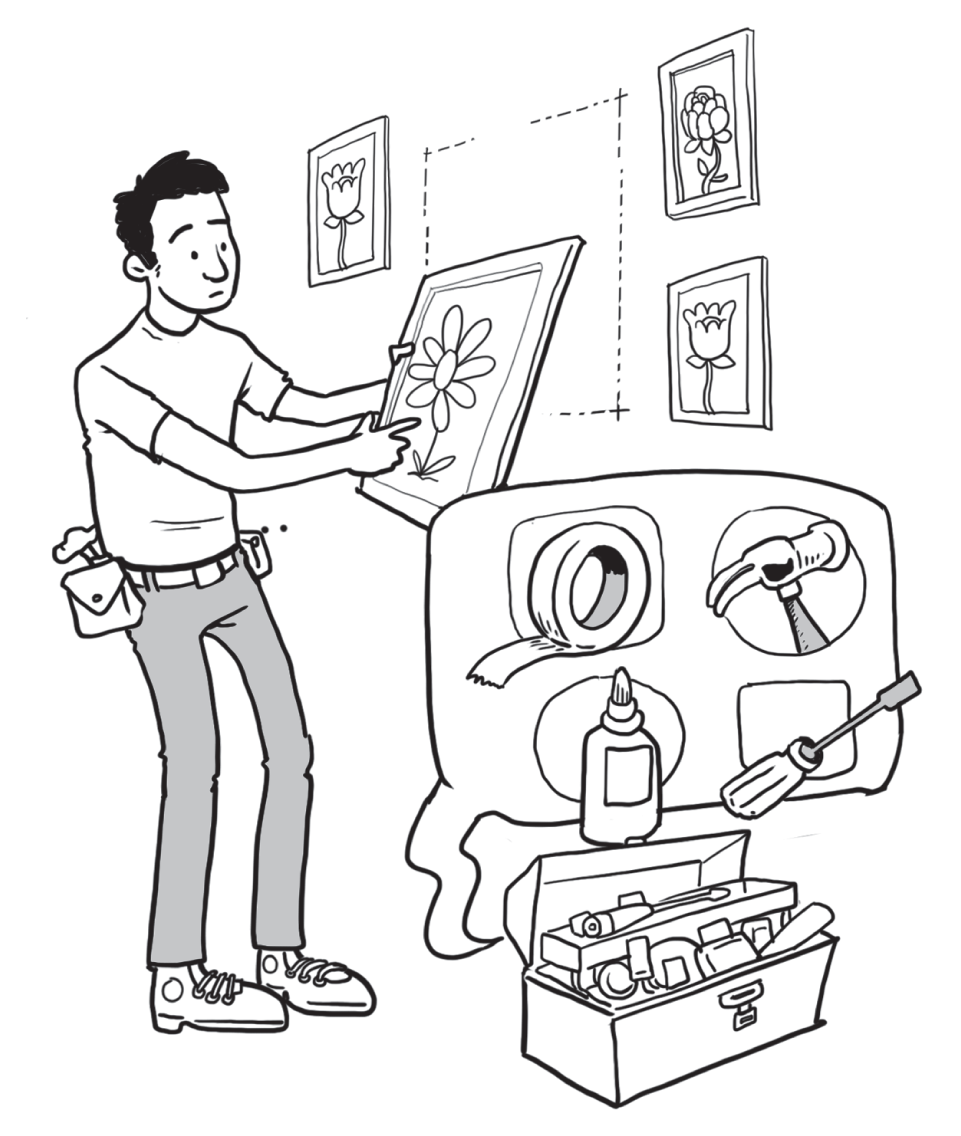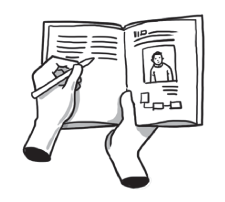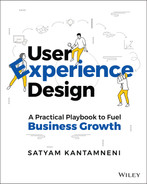CHAPTER 25
PICKING A RESEARCH METHOD PLAY: How do I know which method to use to gather insights?
There are many different research methods to choose from. This play will help you identify the best method(s) for gathering the insights that you need and ensuring the salience of the insights you collect.

Who Are the Key players in the Picking a Research Method play?
| ROLE | WHO’S INVOLVED | RESPONSIBILITIES |
|---|---|---|
 DRIVER |
|
|
 CONTRIBUTOR |
|
|

THE HOW
To effectively pick a method, you will need to be mindful of:
1. The CONTEXT of Your Research
Identify your user experience design phase to determine what types of insights (formative, summative, or sensorial) you need and the best research method to use to find them.
2. The PURPOSE of the Study
Different methods will produce different types of data and insights. Therefore, in addition to identifying the type of insights you need, it is also important to define your purpose—how you will be using these insights. Will you be using the research to define product requirements? To make improvements on an existing product? To decide which ideas and user problems to strategically invest in?
According to Chrisian Rohrer, user research methods can be placed along two spectrums: attitudinal vs. behavioral and quantitative vs. qualitative.
- Attitudinal methods focus on what users say and share. These methods are ideal for quickly collecting insights from the users’ points of view or for when you need an explanation of why users do or think something. The caveat is that attitudinal methods rely on self‐reported data, which may not always be accurate.
- Behavioral methods are based on observation and focus more on understanding what users do and how they do it. This can be ideal for discovering user needs and behaviors.
- Quantitative methods focus on numbers and scores. These methods are ideal for finding trends or establishing standard measures with larger sample sizes.
- Qualitative methods focus on gaining a more descriptive understanding of behaviors that are hard to measure. They are ideal for diving deeper into the surrounding context and discovering the “why” behind what users do.
3. The RESEARCH QUESTIONS You Want Answered
The types of questions you want to ask will also affect which method you use to gather the insights. Take inventory of the research questions that you have gathered throughout the design phases, and see if they call for attitudinal, behavioral, quantitative, or qualitative data.
4. The LOGISTICS That Affect Your Study
Two types of logistics have to be factored in during the selection of the method: timelines and budget.
Timelines
Different research methods require different timelines, depending on elements such as:
- Experiment design;
- Study complexity;
- Recruitment;
- Preparation of stimuli or resources;
- The time required to conduct the studies.
Work with your peer practitioners to determine when they will need the insights. This will determine which methods are possible within that time frame.
Methods such as surveys or unmoderated usability studies are more suitable if you need results quickly; other methods, such as in‐depth interviews or ethnographic studies, require more time to complete.
Budget
- Research effort, research execution, participant recruitment, and incentives all will affect cost, so make sure you know your budget before selecting a method. Research effort includes the time it takes for your researchers to prepare, conduct, synthesize, and create artifacts for a study. This will directly affect the people or teams that need to be involved and how much time each needs to invest.
- Research execution includes the cost of using any research tools to conduct research, such as card‐sorting platforms, eye‐tracking software, and lab bookings/equipments. Some methods, such as unmoderated usability studies, may require the use of additional task‐programming tools and metric‐tracking instrumentation. Make sure you’re taking into consideration what tools you have available and what you may need to bring in.
- Participant incentives will vary depending on the type of participant you’re recruiting, their role, the duration of the study, and the amount of effort required from the individual to participate. Recruitment services or platforms may have additional costs and fees that will need to be factored in.
5. The Right METHOD Based on Your Needs and Priorities
Narrow down the ideal method(s) based on the parameters you’ve identified in the previous points. In the case where there is no exact fit, rank the parameters in order of impact and feasibility to loosen the criteria and find the next best option.
IN ORDER TO MAXIMIZE THE VALUE OF THIS PLAY
- Use more than one method in a single study. Research methods are not mutually exclusive. Based on the goals of each research study, some questions can require a mix of methods, so use creative combinations of tools and methods to get the most accurate answers possible.
- Check the entire process. Picking the right method will not guarantee the validity of your study. Make sure you are also identifying the right user, asking the right questions, synthesizing the data correctly, and communicating the insights effectively (Chapter 27: Research Quality Play).
 RELATED PLAYS
RELATED PLAYS
- Chapter 26: “Research Recruitment Play”
- Chapter 27: “Research Quality Play”
